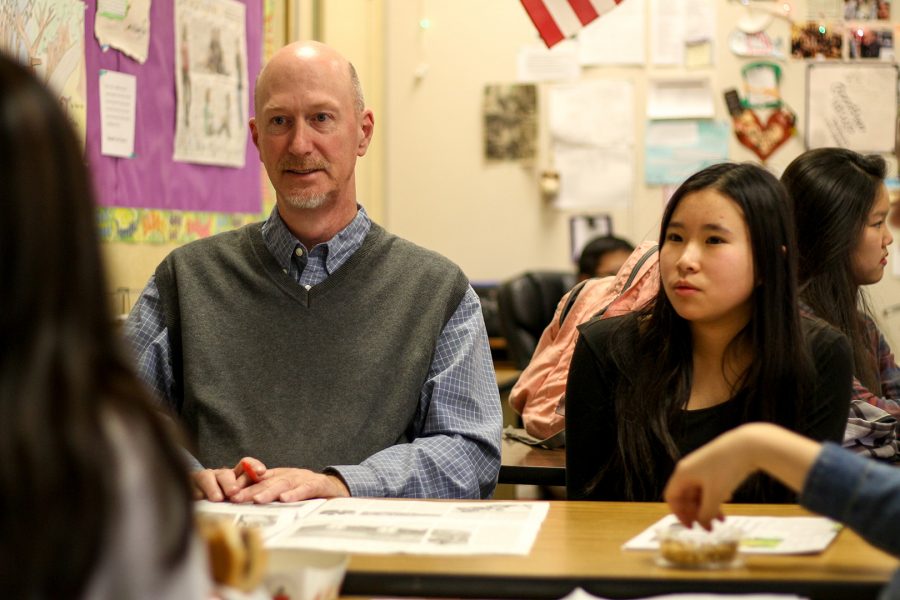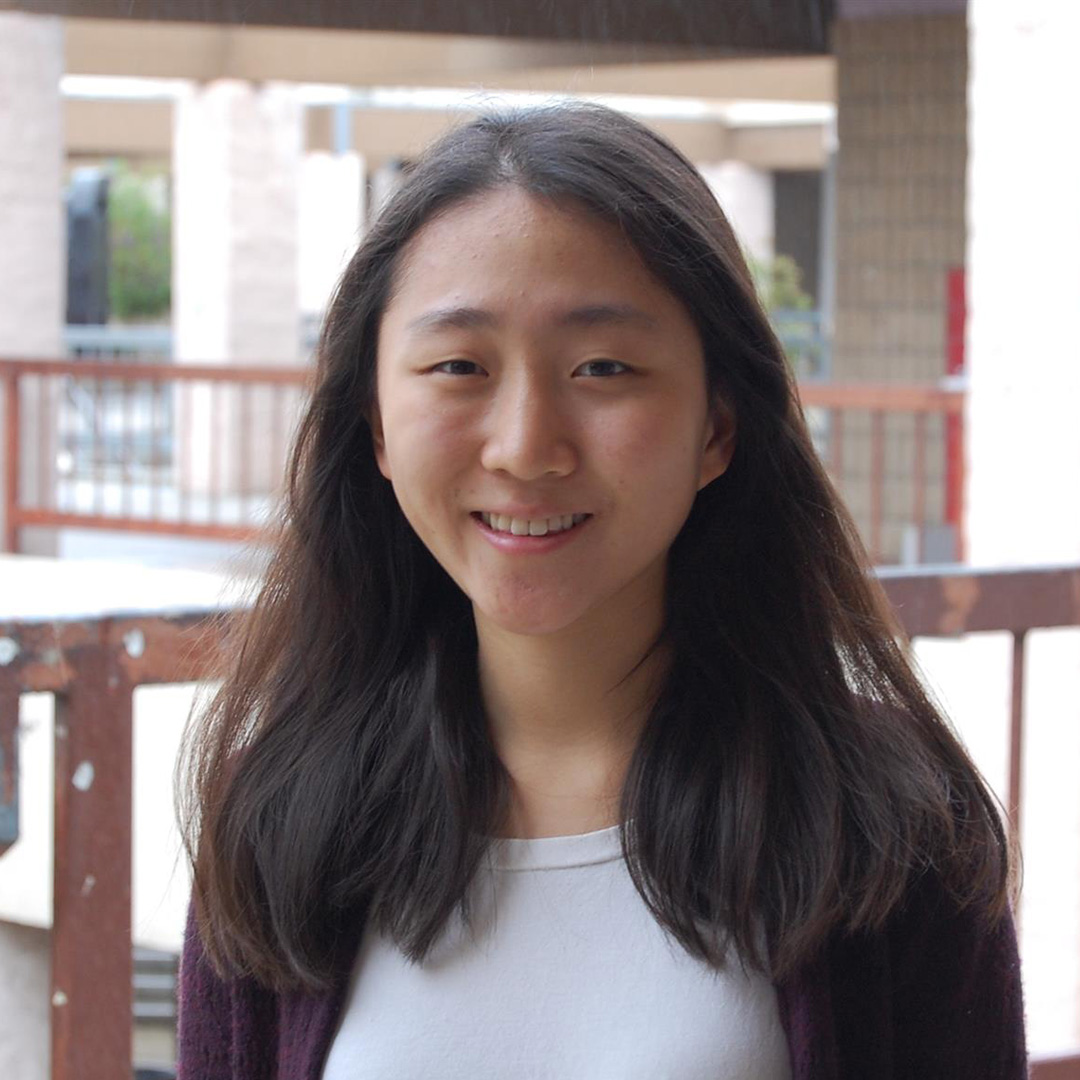On a regular day, Doug List can be seen sitting as his desk in the corner of his classroom, squinting at a draft, pen in hand. Some of his students call him Papa List because he’s caring, attentive and good at what he does—being a teacher and adviser.
List teaches English at Diamond Bar High School and is also the adviser for its journalism program. He came into the program almost six years ago, with 30 years of professional experience in journalism under his belt.
List said the newspaper at DBHS always had advisers who were English teachers with pretty much no experience in journalism.
“The kids all made a big deal to their dean that they wanted someone who actually knew something about a newspaper,” he said.
List said the number of people who had teaching credentials and journalism experience “was probably not a lot,” so he had an advantage.
Many working journalists voluntarily delve into advising either a high school or college publication after doing all the “fun stuff” that comes with a career in journalism. However, List’s case deviates from the norm—just a bit.
List was always interested in the field of journalism. The attraction sparked at a young age when he opened his eyes to sports. When he realized he wasn’t good enough to be a professional athlete or even play in high school, he decided to channel his love for sports into writing.
“I was always pretty good at writing, so I thought I’d be a sports reporter. I mean, going to a baseball game every day and writing about it, what could be better?” he said.
After graduating high school, List enrolled at Indiana University of Pennsylvania and declared his major in English, due to its lack of a journalism program. However, the university did have a college publication, so List paid a visit to the staff during the first week of school and let them know he’d like to work there.
“[Because I was shy], I was too scared to write, so I ended up selling ads. My freshman year, I sold ads and made a lot of money. That actually was very valuable, because I was pretty shy and it got me used to walking up to strangers and talking to them,” he said.
List started writing the next year, and by his senior year, he was the editor of the paper. After graduating, he sent out resumes and eventually got a job at a tiny paper nearby. Eventually, he quit and flew out to California because he had a grandfather who lived here.
For about 10 years, List worked at the local Riverside paper. However, because he wasn’t very happy the last few years there, he decided to quit and applied for a job at the Los Angeles Times.
“If I had been happy there, I would probably have just stayed. Obviously, if you’re in SoCal working at a newspaper, the place you want to go to is the LA Times. And so, I sent a lot of letters to different people and different departments,” he said.
Shortly after, List was mailed a 20-page editing test to gauge his abilities prior to working at a copyediting desk. He completed the test, mailed it back and hoped for the best. Fortunately, there was an opening waiting for him in San Diego.
“A friend I knew who worked [in San Diego] mentioned my name to the guy who was deciding to hire. He called me in for an interview, and I had a three-day tryout, which I had to do in secret. This was a night job, so I’d work during the day and go down there for three days and work all night for them,” List said.
Two weeks later, he got a call from the editor of that section telling him he was hired. A nice feature of his new job was that he could work in Orange County without having to drive all the way to San Diego.
Throughout the years, List moved to different positions as various opportunities closed and opened up. When San Diego eventually closed, he started working in downtown Los Angeles. He said that in the beginning, he worked in positions related to the night copydesk, which was divided into people who edit all the stories.
“They sit there and edit all day long. I did that for a few years. Then there’s also people who design pages and figure out what the headlines are going to be, the shapes, and what photos you’re going to use,” he said.
He remembered what it was like before technology.
“In those days, it was before we had computers, so we did it the old-fashioned way of pasting the stories on cardboard boards,” he said.
Someone had to be there to supervise, so for a while he did that, for what was then the San Fernando Valley District.
“The people down there sent us the layouts downtown, and I and a few others made sure everything fit. By doing that job, I started understanding layout,” he said. “That’s what I did probably the last five or six years [before getting laid off], what they called the news editor.”
List was laid off when the Times started to eliminate sections while he was working as the news editor of the Inland Empire section.
“There was even a day when about 250 people were laid off,” he said.
After getting laid off, List spent almost a year looking for a job in journalism. At the time, the country was in the depth of the recession. Consequently, jobs were scarce.
“I applied for all kinds of stuff, and I think I had one or two interviews in an eight month period. Here I was, with 30 years of experience in journalism. It was unbelievable,” he said.
In the end, it was his wife who came up with the option to teach. Luckily, List had already received his teaching degree from Cal State Los Angeles.
“When I came to California, one of the reasons why I came out was I thought maybe I could go back to school and get a teaching degree. When I worked in Pennsylvania, it was hand to mouth living—just barely minimum wage,” he said.
List wasn’t that concerned with money, but didn’t want to live in an apartment all his life.
“Once I got to Riverside, I started making better money and started enjoying it more, working as the entertainment editor,” he said.
He took a break from teaching, and later, ended up going to Cal State LA for the teaching degree program.
List applied and went through an interview process for the open journalism adviser and English teacher position at DBHS, and just two days later, he received a call asking him to start right away.
After his first year working as the journalism adviser, List realized there were a lot of problems with the paper, including the poor editing system and the paper’s lack of an aesthetic appeal.
“I still remember the first time I suggested maybe we should think about reducing the newspaper size into a tabloid; the seniors looked at me as if I was crazy. They were saying, ‘This is how we’ve always done it, Mr. List. This is a Diamond Bar tradition.’ They were so proud of it,” he said.
There were problems with the editing process too. People who were writing decent stories went through so many drafts, back and forth. List said it was ludicrous.
It all came down to finding students who were in agreement with him. One student, Justin Park, was able to convince the seniors that his ideas were great, and he should be an editor-in-chief. To this day, List says he does not understand how Park was able to convince the rest of the staff.
“He took it upon himself to start redoing the paper, and with that staff, we were able to do a lot more than we had before,” List said.
The paper has made big strides since, and List now advises a staff with a notable reputation and a tradition of multiple awards. He probably never imagined life would take a turn and place him in a high school, full of kids. But in his own words, “It turned out to be great.”



